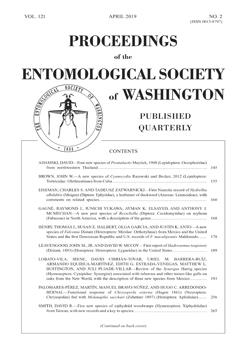Chrysoperla externa (Hagen 1861) is a generalist predator with a high degree of adaptability to different environments, which has allowed it to have a wide geographical distribution and to be considered as an alternative in biological control programs. This functional response study was performed to evaluate its predatory capacity on Melanaphis sacchari (Zehntner 1897), as prey. The L3 instar showed the highest prey consumption at each evaluated. The logistic regression analysis showed that the linear coefficient P1 of each larval instar was negative and significant (L1: P1 = - 0.1225 ± 0.0183, X2 = 44.8626, P = 0.0001*; L2: P1 = - 0.0747 ± 0.0265, X2 = 7.9182, P = 0.0049*; L3: P1 = - 1.1136 ± 0.6898, X2 = 2.6058, P = 0.01065*), which indicates that the consumption trend of each instar corresponds to a type II functional response. The highest attack coefficients (a) (0.00625 ± 0.000573) and the shortest handling times (Th) (1.0132 ± 0.0918) were observed in L3, meaning that this instar needs less time to identify, locate, capture and consume its prey. Based on these results, it can be inferred that C. externa can be considered as a natural enemy of M. sacchari.
How to translate text using browser tools
30 April 2019
Functional Response of Chrysoperla externa (Hagen 1861) (Neuroptera: Chrysopidae) Fed with Melanaphis sacchari (Zehntner 1897) (Hemiptera: Aphididae)
Martín Palomares-Pérez,
Manuel Bravo-Núñez,
Hugo C. Arredondo-Bernal
ACCESS THE FULL ARTICLE
natural enemy
pest
predator
sorghum
yellow aphid





